What is an African Violet sport?
- An African Violet sport is an African Violet plant which did not breed similar to its original parent / hybrid plant.
- Which means that your African Violet sport plant does not match the official AVSA (African Violet Society of America) FC2 description (FC2 is the First Class Version 2 Software offered by AVSA, it is a database of over 15,000 african violet plants).
- The physical characteristics of the sport African Violet plant will be different from its parent plant.
- These differences can either be different bloom colors, patterns, edge etc…or different leaf shape, leaf color and/ or leaf texture.
Do African Violet sports happen naturally? Why do African Violet sports occur?
- Yes African Violet sports occur naturally. Sports occur due to a genetic mutation in the African Violet plant. This genetic mutation is triggered by external stressors such as an extreme change in temperature, water pH, high/low humidity or presence of a pest infestation, virus or disease.
- When you first notice an African Violet sport it can either be genetically stable or unstable.
- If it is genetically unstable, it will continuously sport at each bloom cycle which means it will produce different colored blooms and/or bloom patterns. It will not bloom true over each generation, when propagated from leaf.
- If an African Violet sport is genetically stable, it will bloom true (which means it will bloom exactly same) over three generations (when propagated from leaf and/or sucker). This African Violet plant is now a stable African Violet sport.
- Sometimes, when an African Violet sports, it is just reverting back to its original parent or its original ancestor.
African Violet potting mix, perlite and sphagnum moss shown below:
How can I identify/ confirm an African Violet sport?
- If your African Violet flower or leaf is dramatically different from its original color, shape or texture, it may be African Violet sport.
- Most African Violet sports occur in multicolor or fantasy type African Violet flowers. (For more information on African Violet Flower Color Patterns, visit here, “What are the Different Color Patterns of African Violet Flowers?“).
- The plain or solid colored African Violet flowers, rarely sport. They may either be paler or darker versions of the original colored flowers.
- If you think your African Violet plant has developed a sport flower. Allow that flower to complete its bloom cycle; that is allow it to fade and naturally dry out. Then monitor the plant for another 3 bloom cycles.
- If your African Violet plant has truly “sported”, it will produce the sport African Violet flower in the next 3 bloom cycles.
- This will mean you have a stable African Violet sport plant.
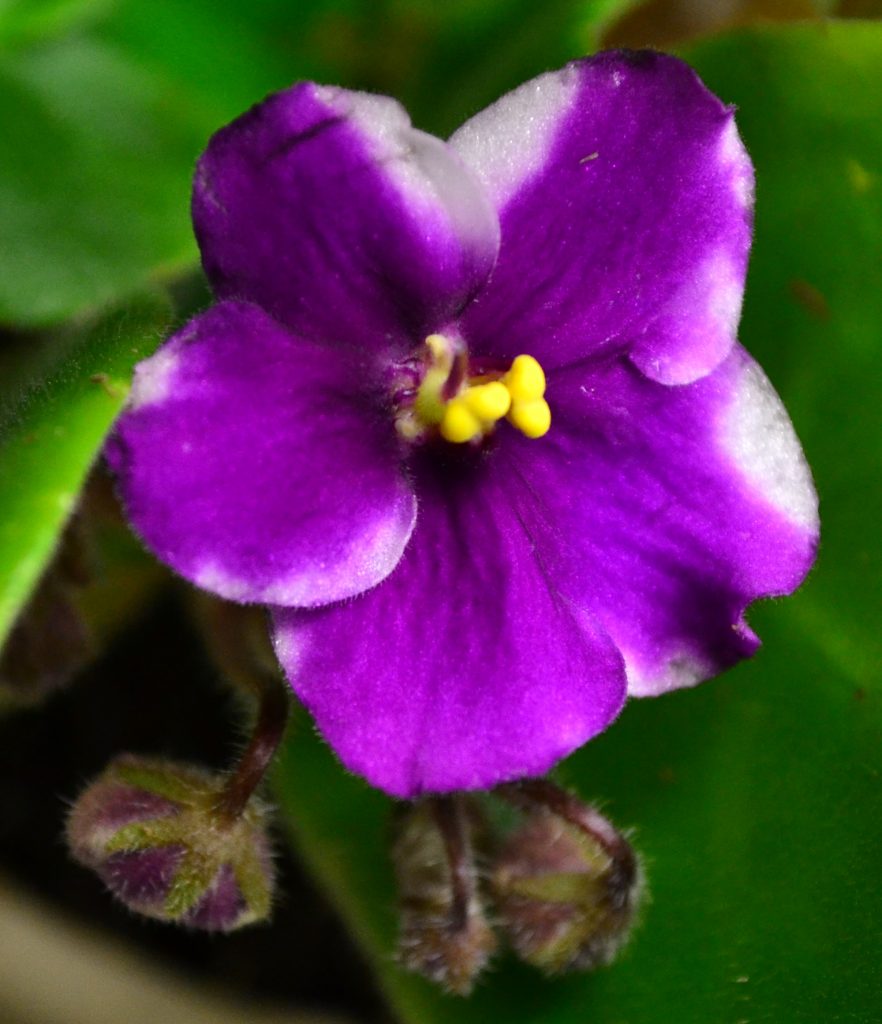
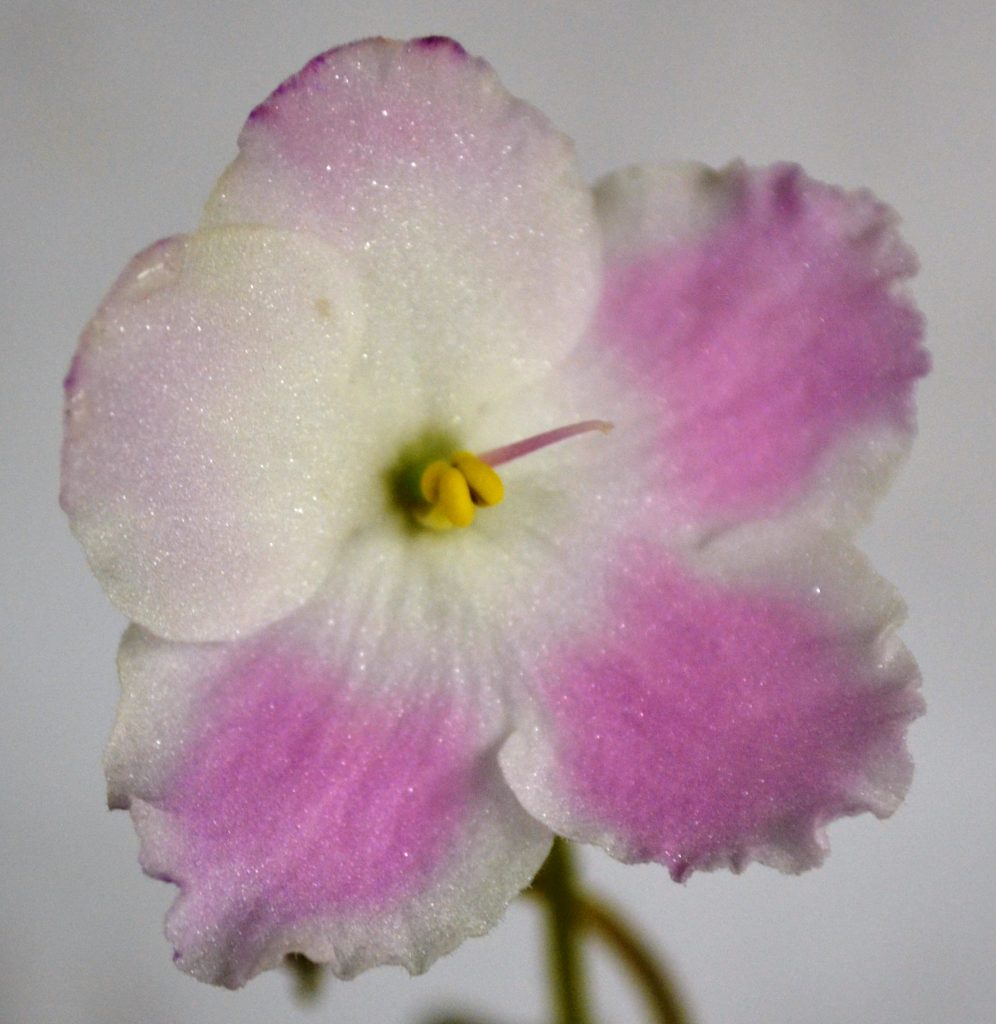
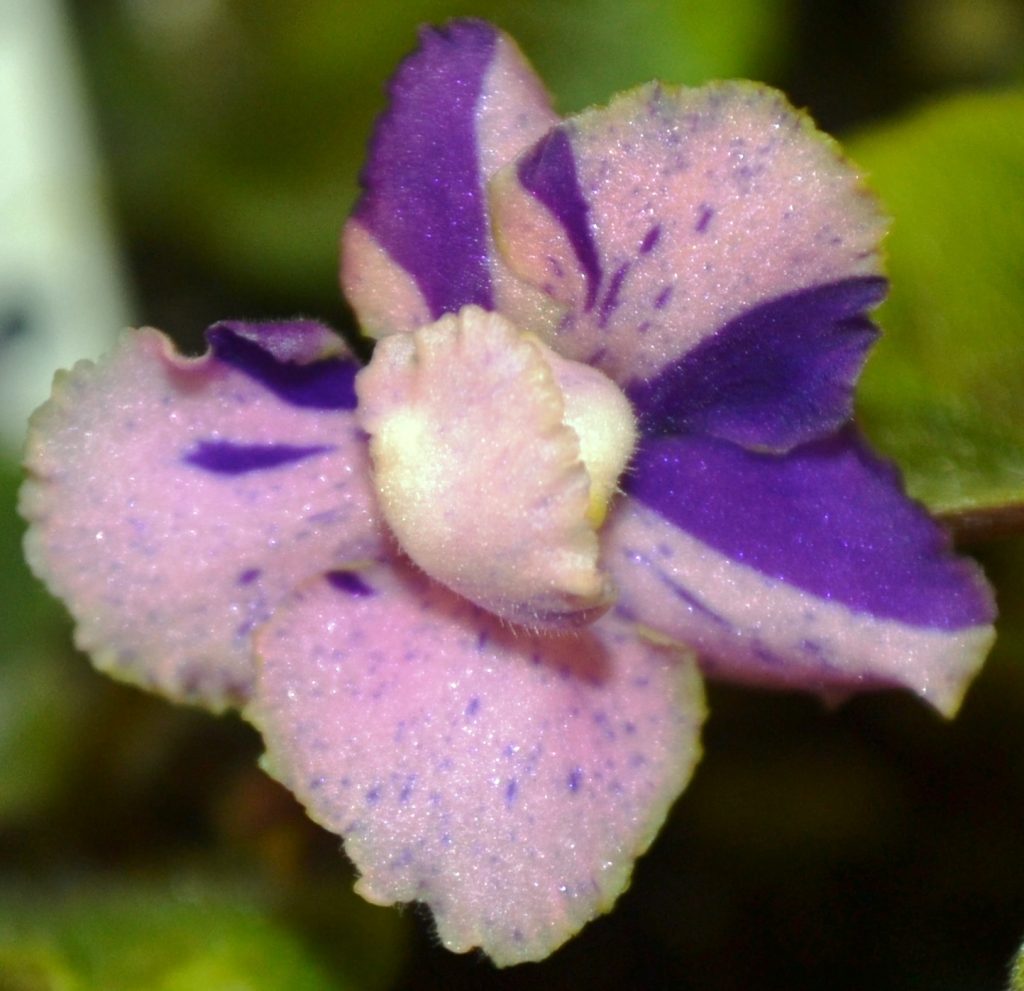
- If your African Violet sport plant is not stable, after one bloom cycle it may revert back to its original bloom color and /or description.
- If you have grown your African Violet sport plant from leaf, its still a baby plant, then its normal for the first bloom to not completely match the description of the original flower.
- Most times, as the African Violet plant matures, during the second bloom cycle, the flowers will start to display its color, shape and style true to its original description.
- Sometimes, an African Violet plant can be very unstable and its routinely sports.
- Sometimes, on the same African Violet plant you will have two blooms/flowers which look different. One will match the original description and the other will be slightly different. In most cases, the African Violet plant will be ok and in subsequent bloom cycles the blooms will match its original description / flowers.
- These events described above also holds true for leaves too.
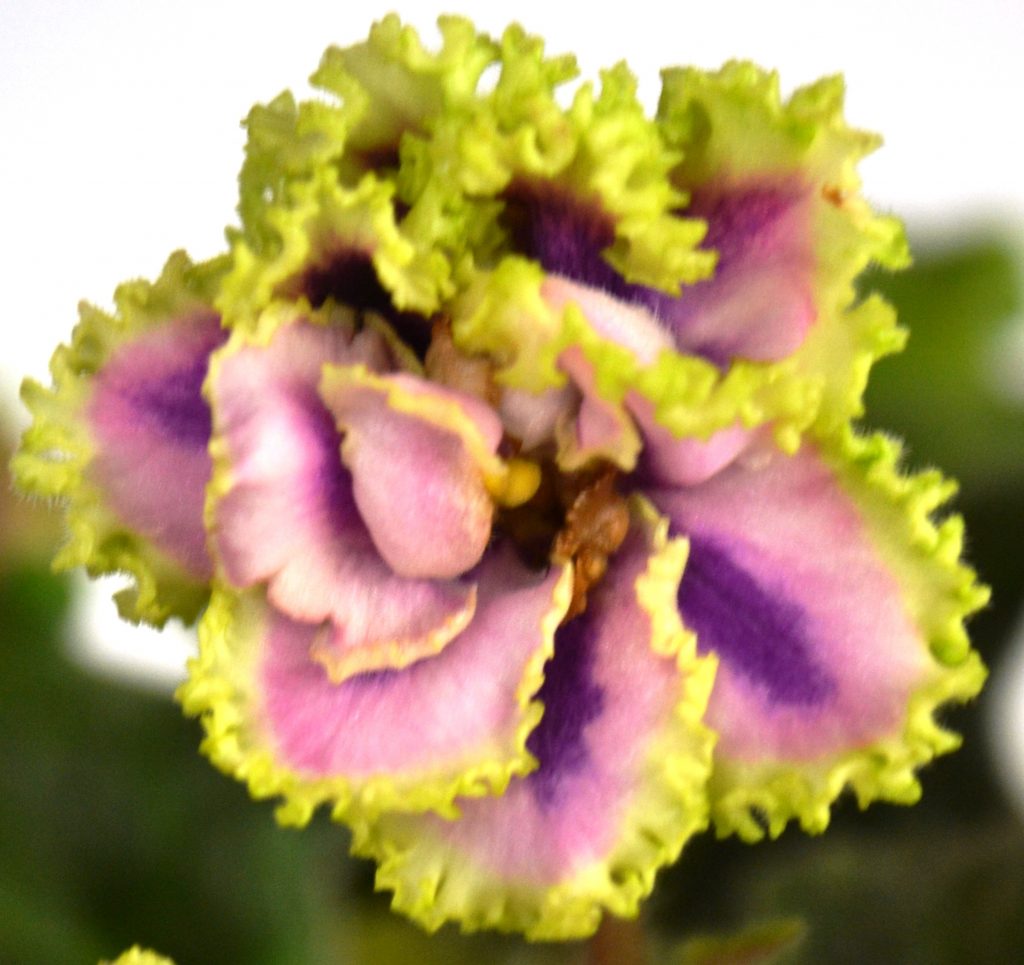
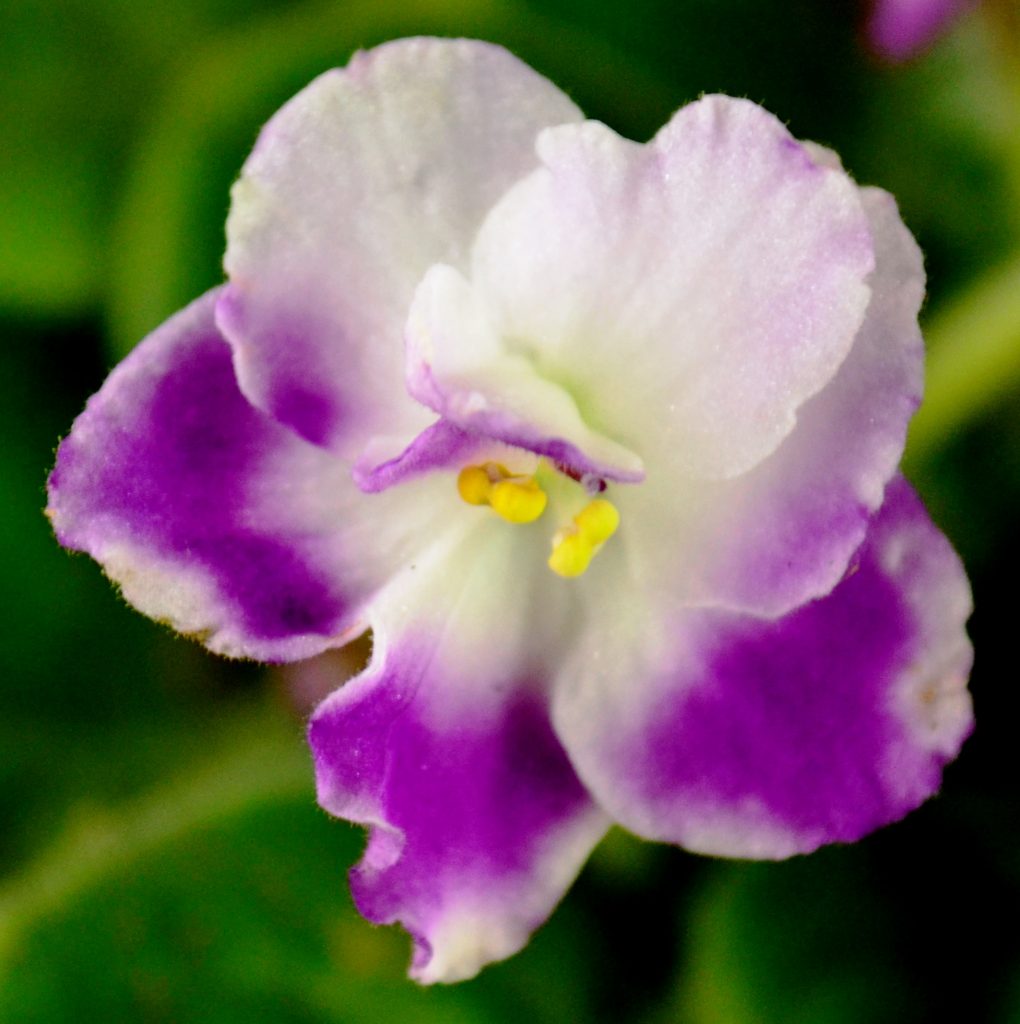
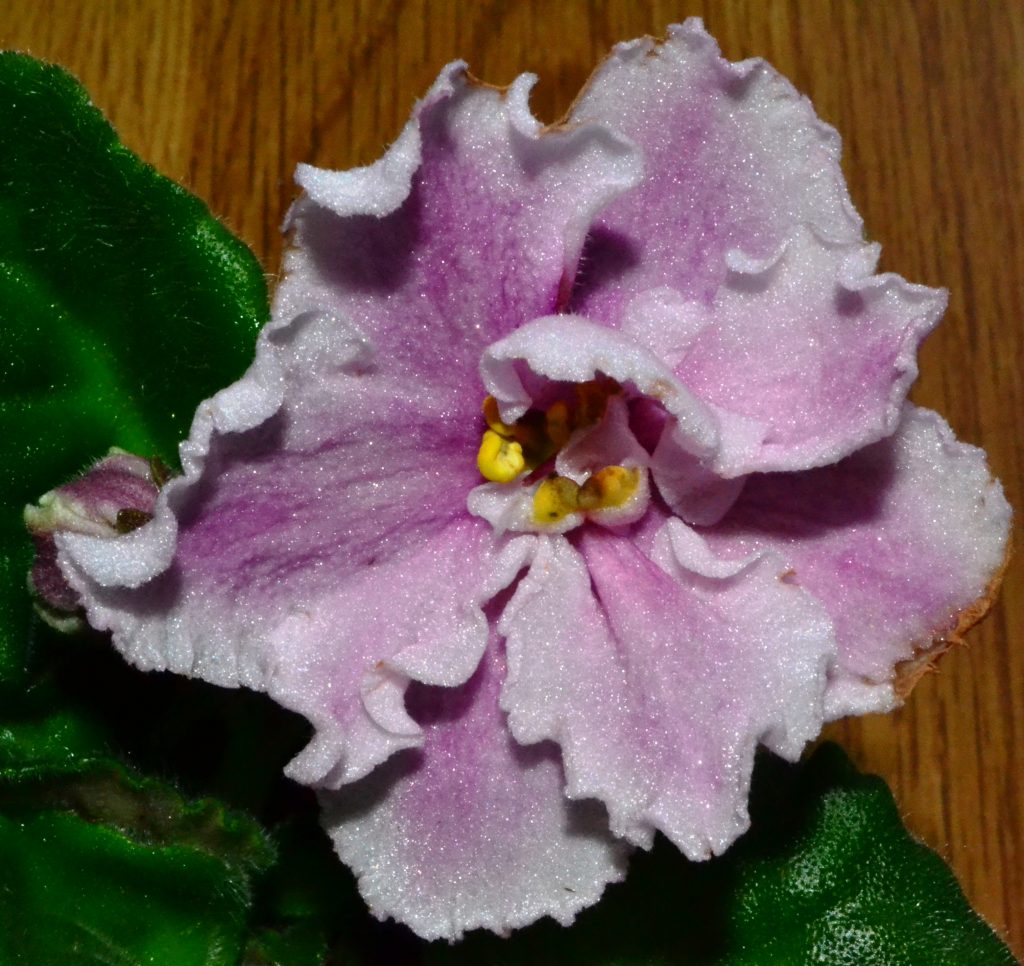
Is there an official list of African Violet sports?
- Yes, there is an official list of African Violet sports. If you check on the African Violet Society of America (AVSA) website here, www.avsa.org/sports they have a list of African Violet sports.
- The list has two columns. The first column, lists the African Violet cultivar/plant from which the sport originated. The second column lists the name and description of sports.
- Usually African Violet sports are named by there own unique name.
- In some instances, a single original African Violet plant, can have multiple sports. For e.g., Allegro Sundae, Astro, Ballet Taffy, Blue Thunder, Buckeye Irish Lace, Candy Swirls, Carnation Sprinkles, Emerald City, Grangers Valencia, Funambule, Kilauea, Ko’s Chortle, Live Wire, Lovestruck etc….
Few reference books below regarding African Violets, some of the information may be outdated, but its still an interesting read.
Can I register my African Violet sport with the African Violet Society of America (AVSA)?
- If you have identified a true African Violet sport plant, yes you can register with AVSA.
- First, confirm that the African Violet sport you have identified, is not already registered.
- You can check the list of registered African Violet sport plants, here, http://www.avsa.org/sports.
- If your sport African Violet plant is stable and blooms the sport flower in its next 3 bloom cycles, then yes it can be registered – following certain criteria.
- First criteria, the sport bloom should be better than the original bloom. In most cases sports are not that better, than your original flower.
- “Better” is a relative term when it comes to African Violet flowers and it can vary from person to person.
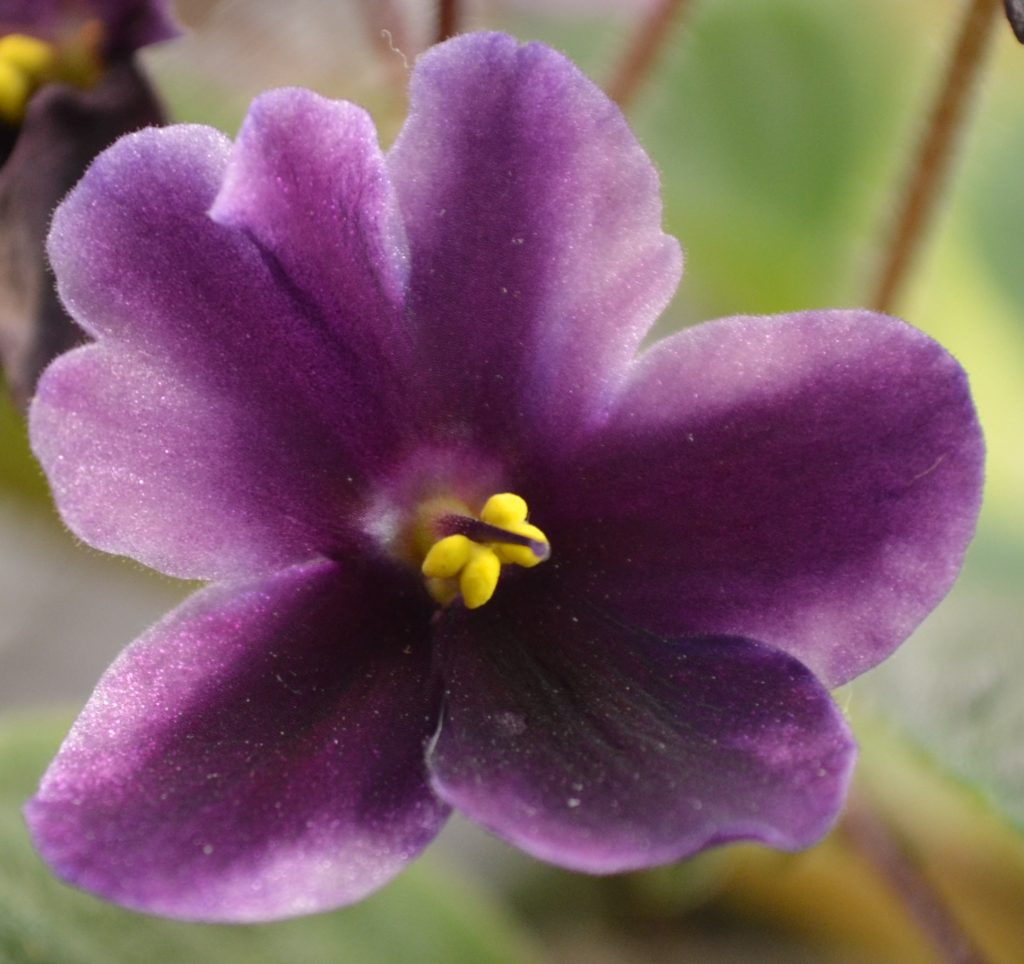
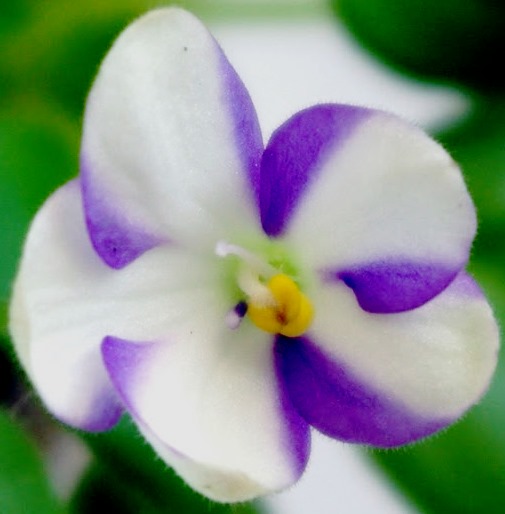
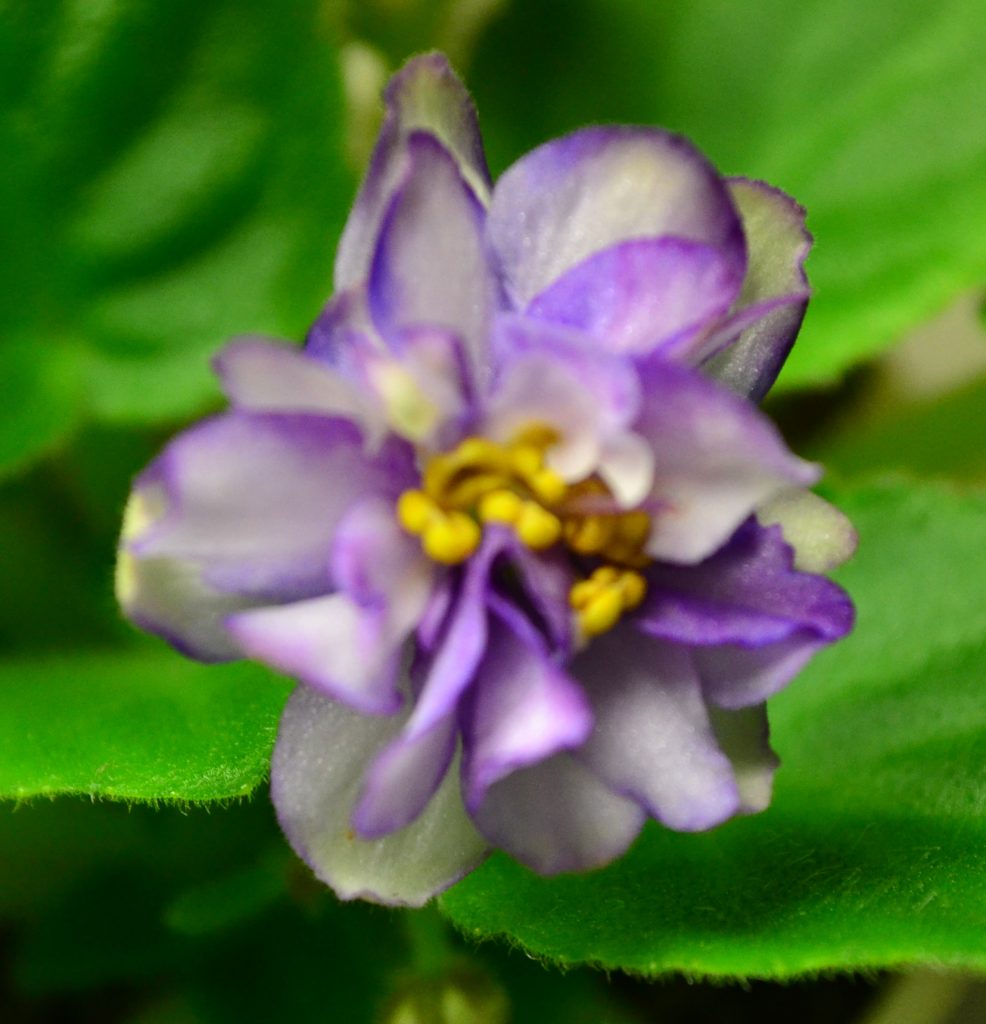
- A general rule, the sport bloom is a different eye catching flower shade, it has pretty fantasy markings, it is frilly in shape, with wavy leaves or it has different type of petals. (For more information on African Violet Flower Color Patterns, visit here, “What are the Different Color Patterns of African Violet Flowers?“).
- Once you have confirmed your African Violet sport is stable, you feel it is worth registering and it has not been registered before, you can proceed to the next step.
- This next step, is propagating your sport plant for 3 generations.
- This means to take a leaf from your sport African Violet plant and propagating it. (For more information on how to put down a leaf for African Violet propagation, visit here, “African Violet Leaf Propagation: How to Produce Baby Plantlets?“).
- Once you get baby plantlets from this propagated leaf, you grow it to a mature African Violet plant, confirm that the blooms on the 1st generation African Violet sport are similar to your parent African Violet sport plant.
- If it is similar, this confirms that your African Violet sport is blooming stable. Take a picture of this flower for a visual record.
- Next, take a leaf from this 1st generation plant and propagate it.
- Similar to the 1st generation plant, produce a 2nd generation baby plantlet and grow to an adult African Violet sport plant.
- Confirm that this 2nd generation African Violet also blooms true to your original parent African Violet sport plant. Take a picture of the flower, for a visual record.
- Finally, take a leaf from this 2nd generation adult African Violet plant and propagate it.
- The baby plantlet produced will be the 3rd generation African Violet plant, from the original sport African Violet.
- Again, confirm that this 3rd generation plant blooms true to its original parent sport African Violet plant. Remember, to take a picture of the flower, as a visual record.
- Now, you are ready to register your plant with AVSA. You can contact the AVSA to find out the exact procedure and forms required for registration of your sport plant.
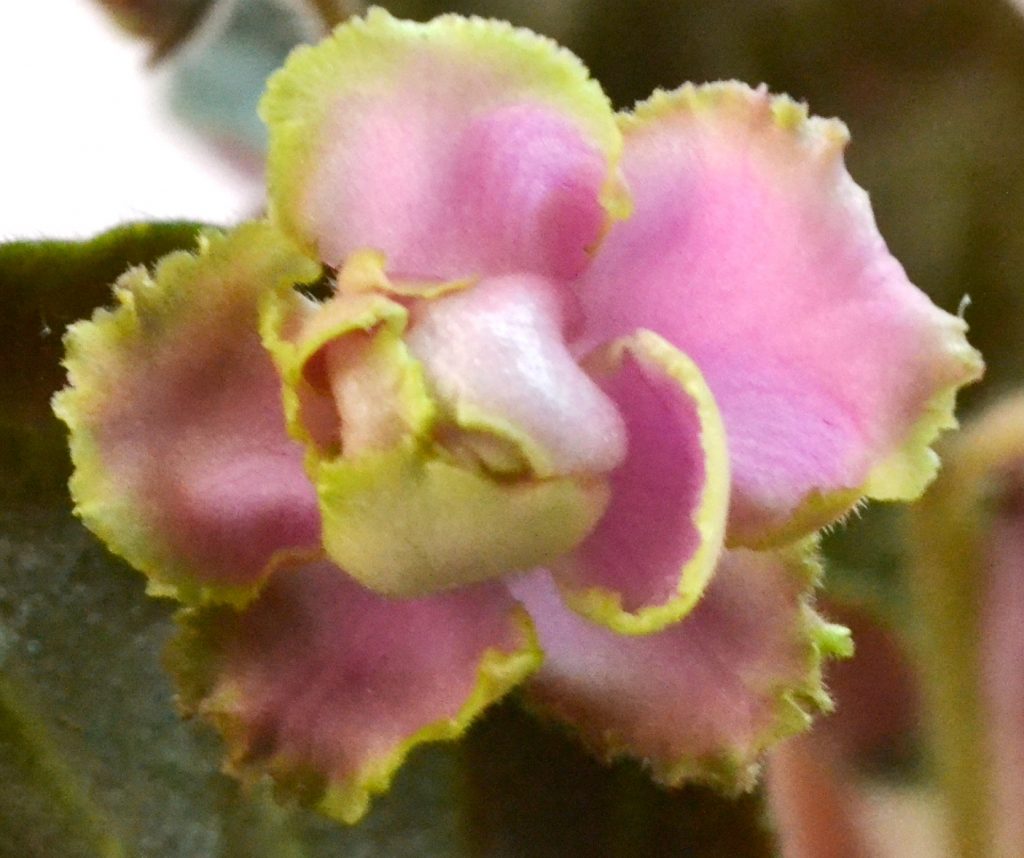
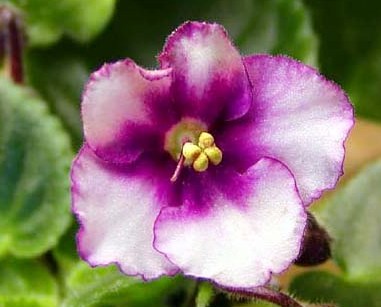
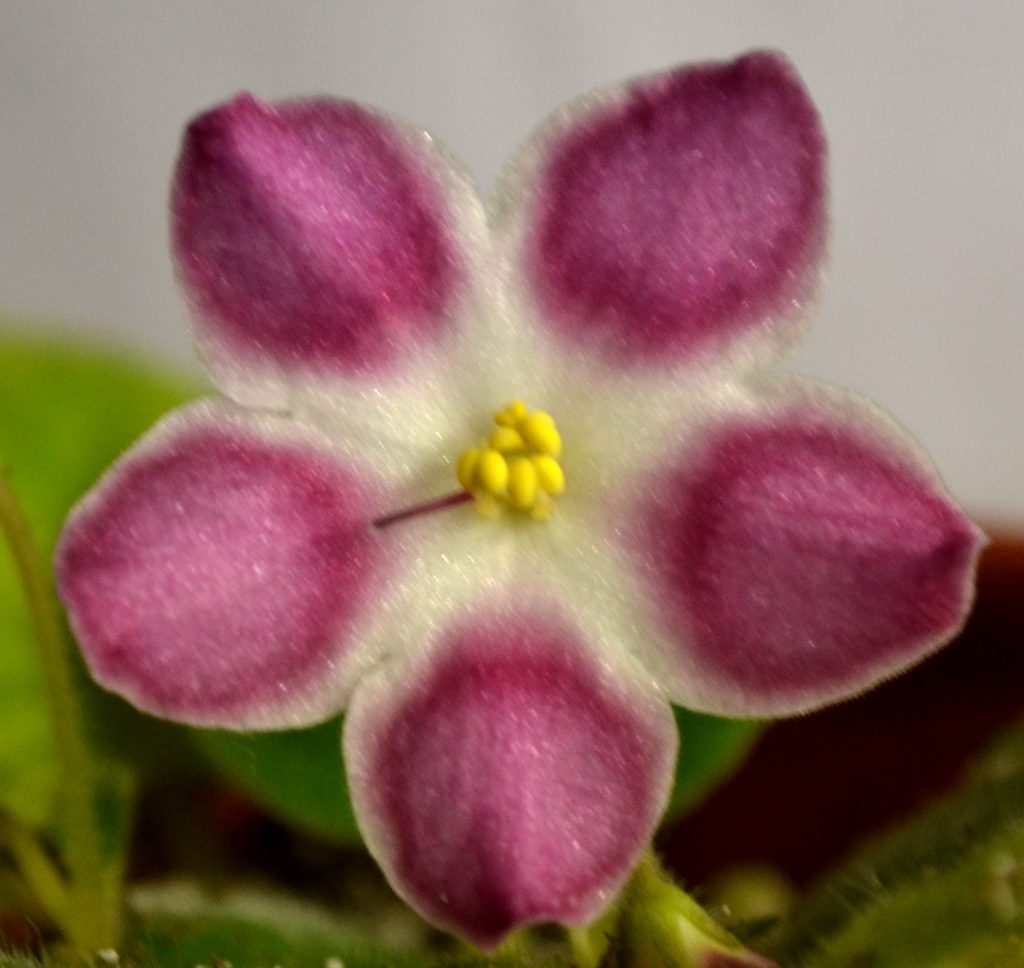
Can African Violet sports be artificially created?
- Yes, African Violet sport plants can be created artificially.
- There are a few hybridizers and hobbyists who have tried to create African Violet sports artificially.
- This entails increasing the temperature to above 90F, raising the water pH above 8 (alkaline pH).
- African Violet sports can also be chemically induced by treating the plants with colchicine (potent chemical extracted from plants), gibberellic acid (a plant hormone), radiation, birth control pills hair growth medications, fertility medicines etc…
- A study in 2007, treated African Violets with colchicine ( a chemical mutation) and gamma radiation to develop stable and unique African Violets ( Reference: K.A.C.N. Seneviratne and D.S.A. Wijesundara, 2007. First African Violets (Saintpaulia ionantha, H. Wendl.) With a Changing Colour Pattern Induced by Mutation. American Journal of Plant Physiology, 2: 233-236.).
- A more recent study, reviewed the application of colchicine on a variety of ornamental plants. (Reference: Studies on Colchicine Induced Chromosome Doubling for Enhancement of Quality Traits in Ornamental Plants, Ayesha Manzoor, Touqeer Ahmad, Muhammad Ajmal Bashir, Ishfaq Ahmad Hafiz, Cristian Silvestri, Plants (Basel) 2019 Jul; 8(7): 194)
- Use of Gibberellic acid and Salicylic acid on African Violets to create chimeras, has been outlined in a recent 2019 study. (Reference: The effects of GA and SA hormonal treatments on growth and flowering of African violets (Saintpaulia ionantha wendi.), Mohammad Aslanpour, Mahmoud Shoor, Behnaz Ghalekahi, Ahmad Sharifi, Mahdieh Kharrazi. August 2019, International Journal of Engineering and Technology 11(4):793-804
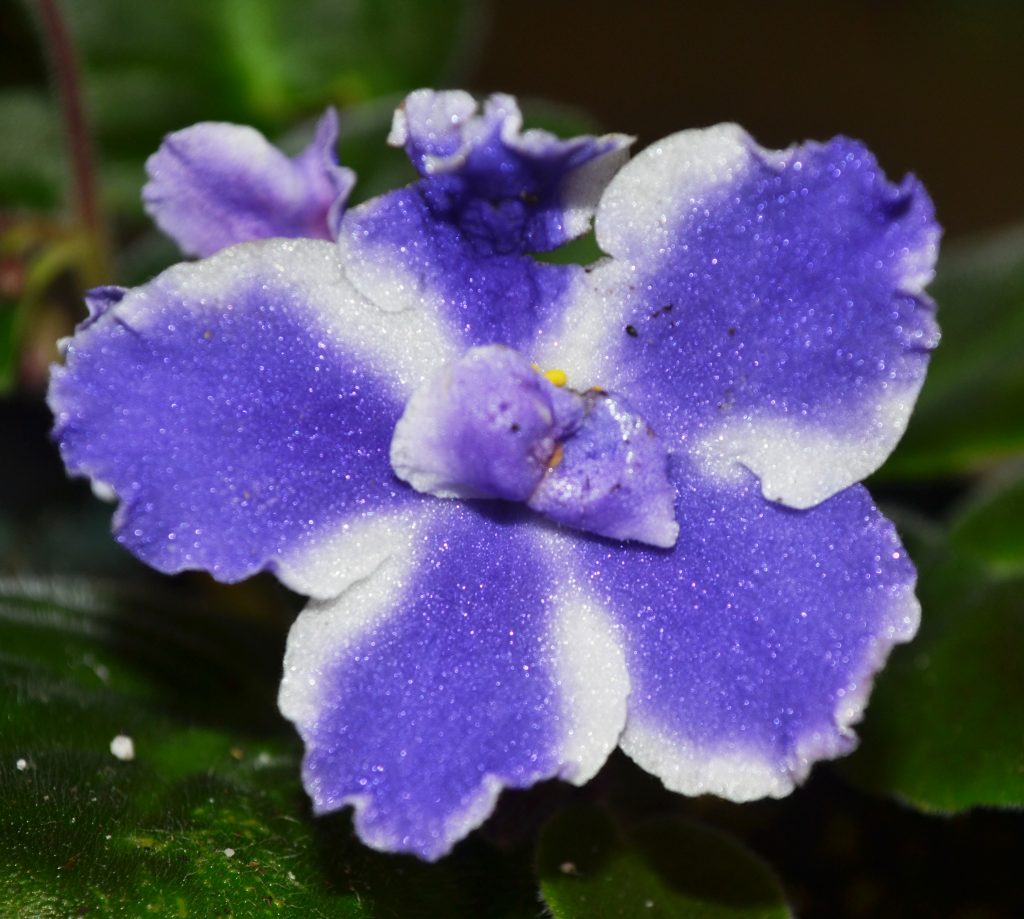
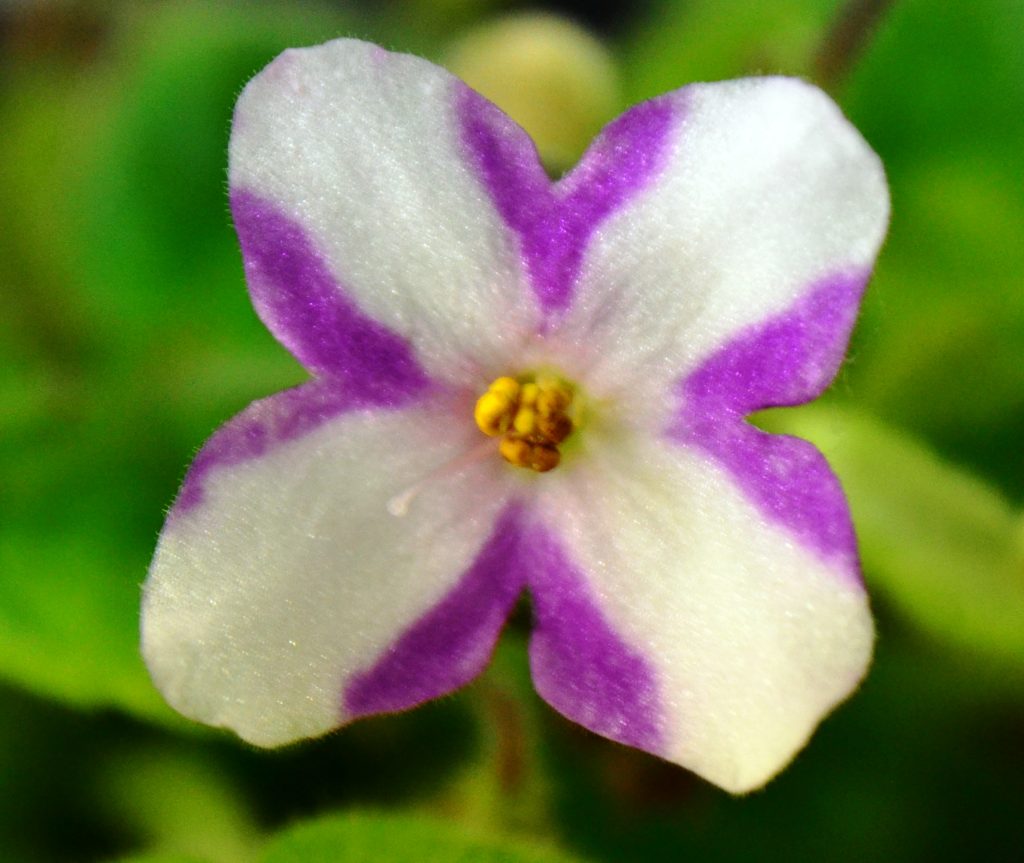
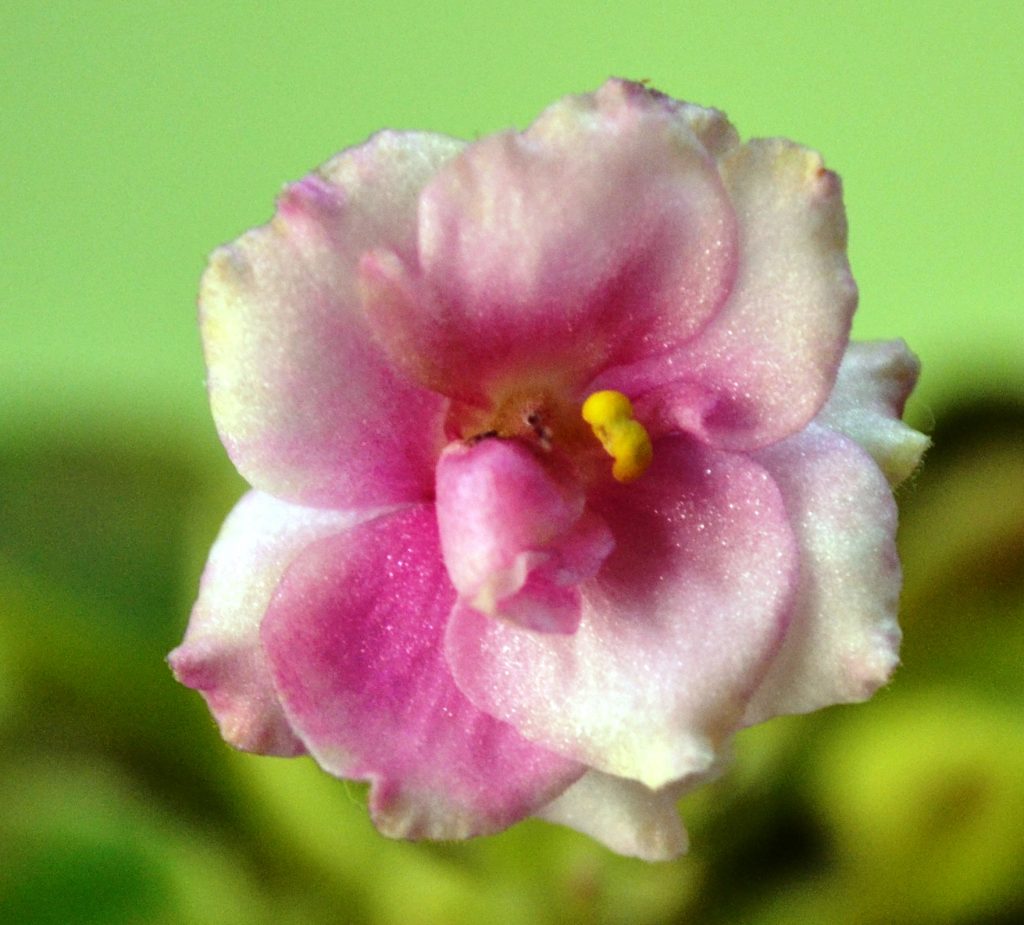
Are more certain African Violet flower types more susceptible to becoming a sport?
- Yes, there are certain African Violet varieties which are more susceptible to becoming a sport. These include Grangers valencia (the first registered chimera), Kilauea, Moonbeam, Yukako (more vintage chimeras), Ko’s chortle, Sora patty ann (a relatively recent chimera), Ma’s glass slipper, Pretty miss kelly, Rebels splatter kake, Robs plaid skirt, Sierra sunrise, Sparky and Suncoast paisley print.
Ceramic pots with different designs, can be used as a nice outer container for your African Violet plants, as shown below:
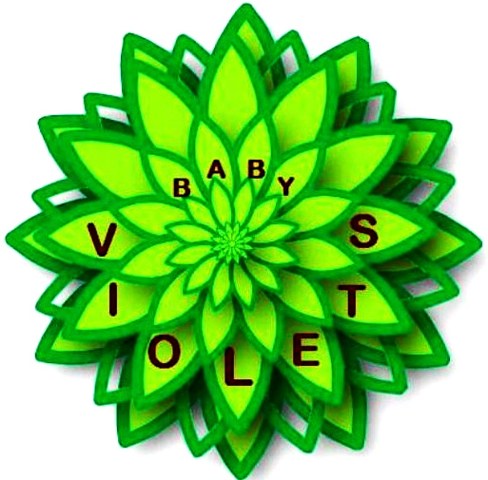
*Our Affiliate Programs: We are a participant in the Amazon Services LLC Associates Program, an affiliate advertising program designed to provide a means for us to earn fees by linking to Amazon.com and affiliated sites.
Though we do link to many items on Amazon out of convenience to our readers, we do also participate in other affiliate programs that also pay us a commission for any purchases you might make through our links (at no additional cost to you!).

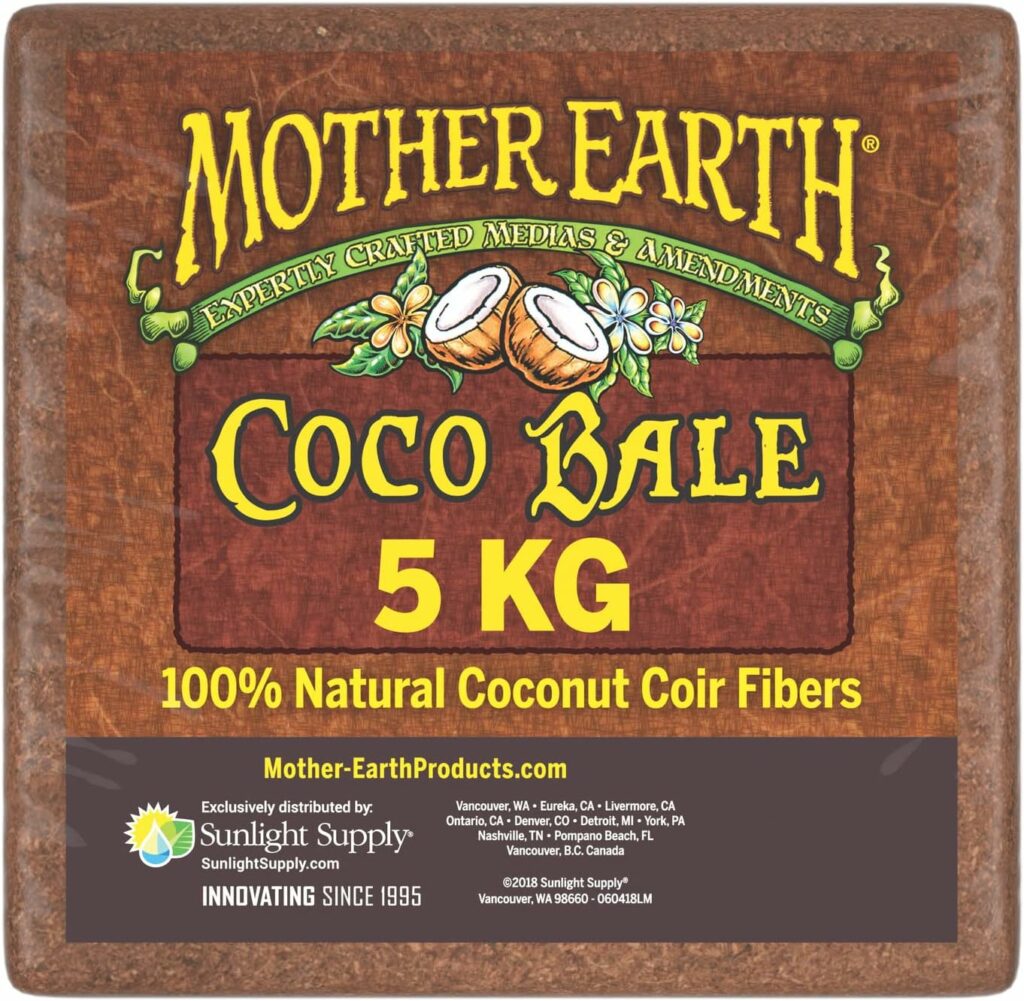
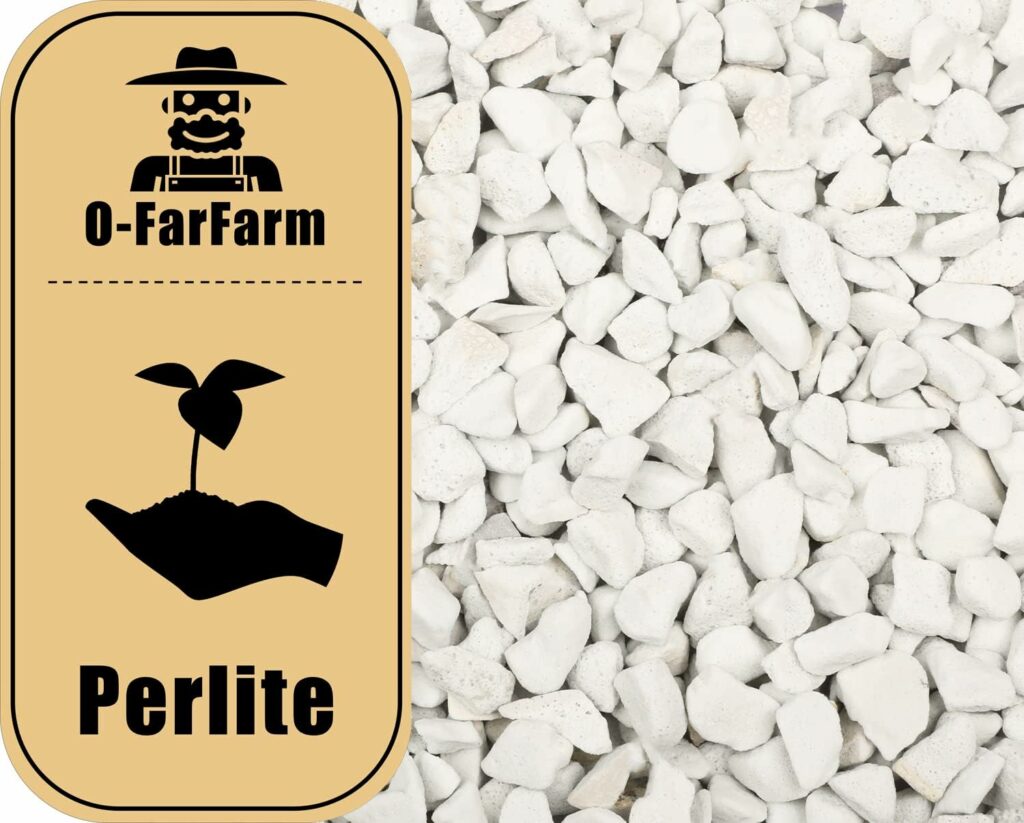

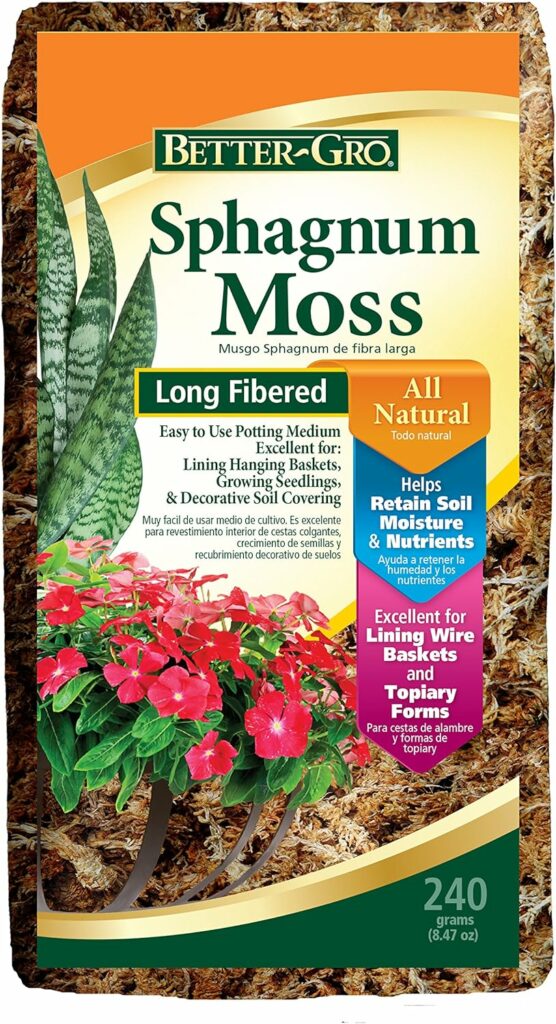


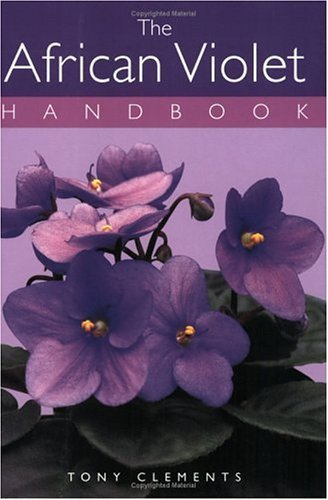

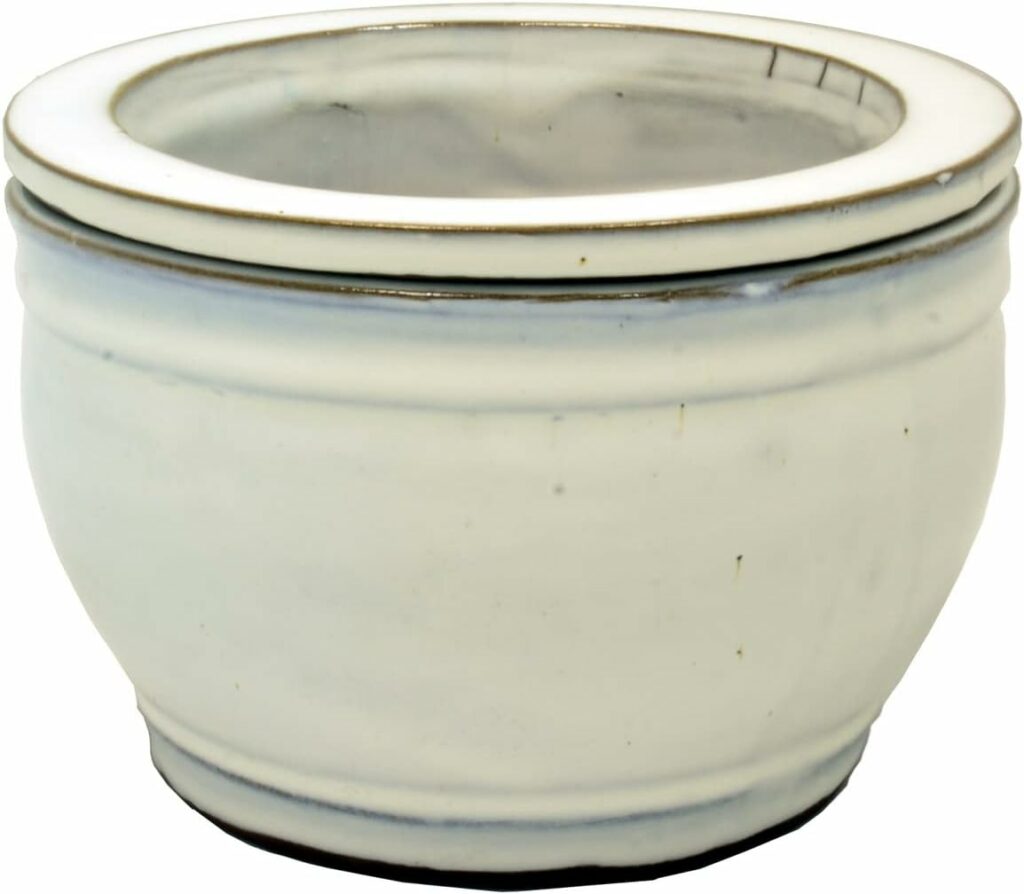
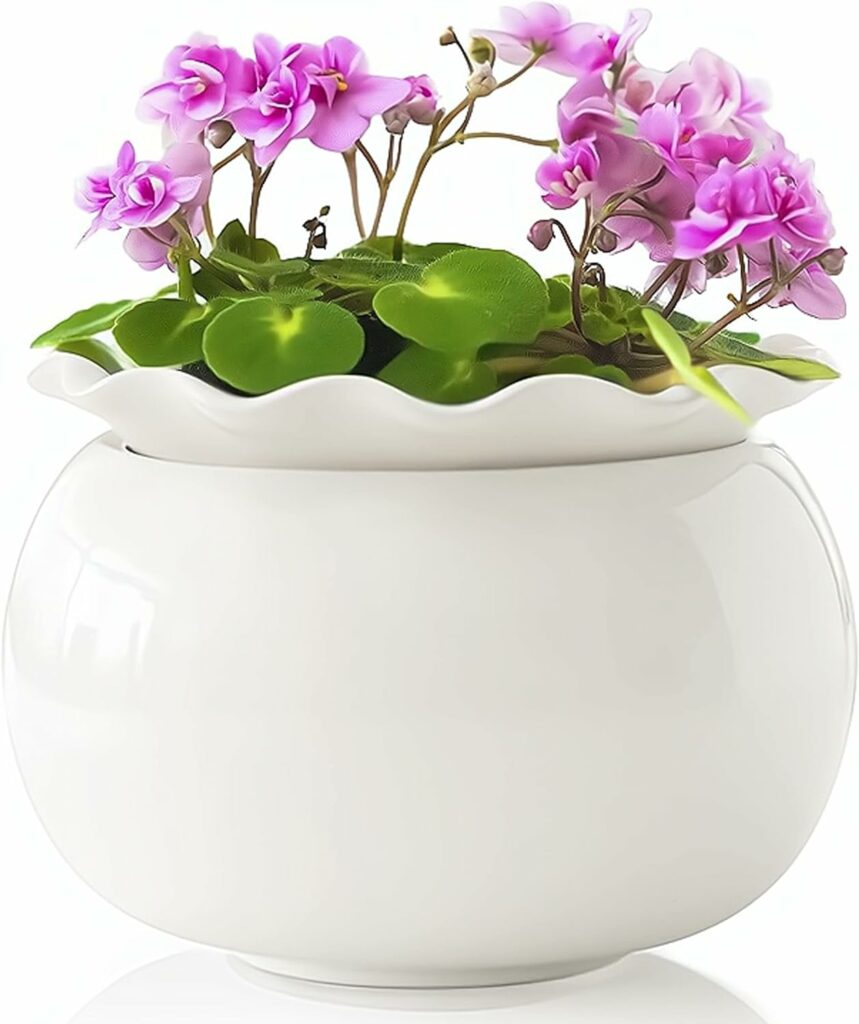
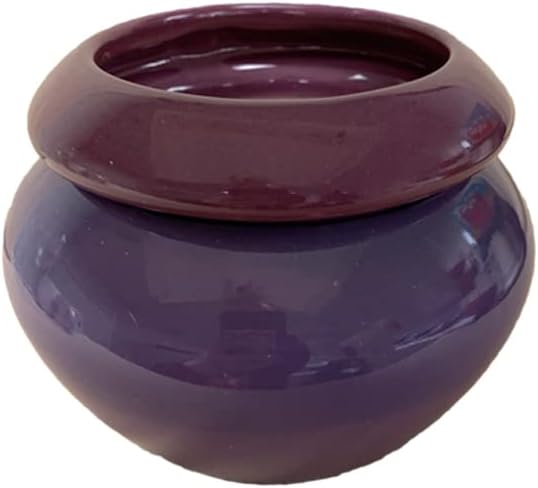
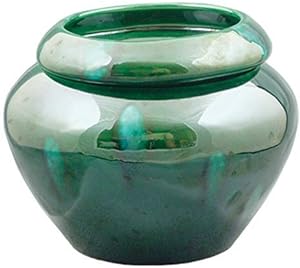
Wow! This is a very interesting article, thank you so much for creating this.
Thank you Annette!
A great article which is very handy as I am hoping to register a beautiful sport. Thank you for explaining the process.
Thank you Missy! BV
It is informative. I have not known about this subject until now. I just see people having chimeras and talking about Russian hybridizers.
Thank you for publishing this article for me.
Your welcome.
Thank you for this clear article – I now know what to do next with the plant I think is a sport (of Fire Moths). Sounds like it will be about a year and a half or more before I can register it. But what fun it will be to try!
Thank you Erica for your kind words! Best of Luck in the registration process. BV